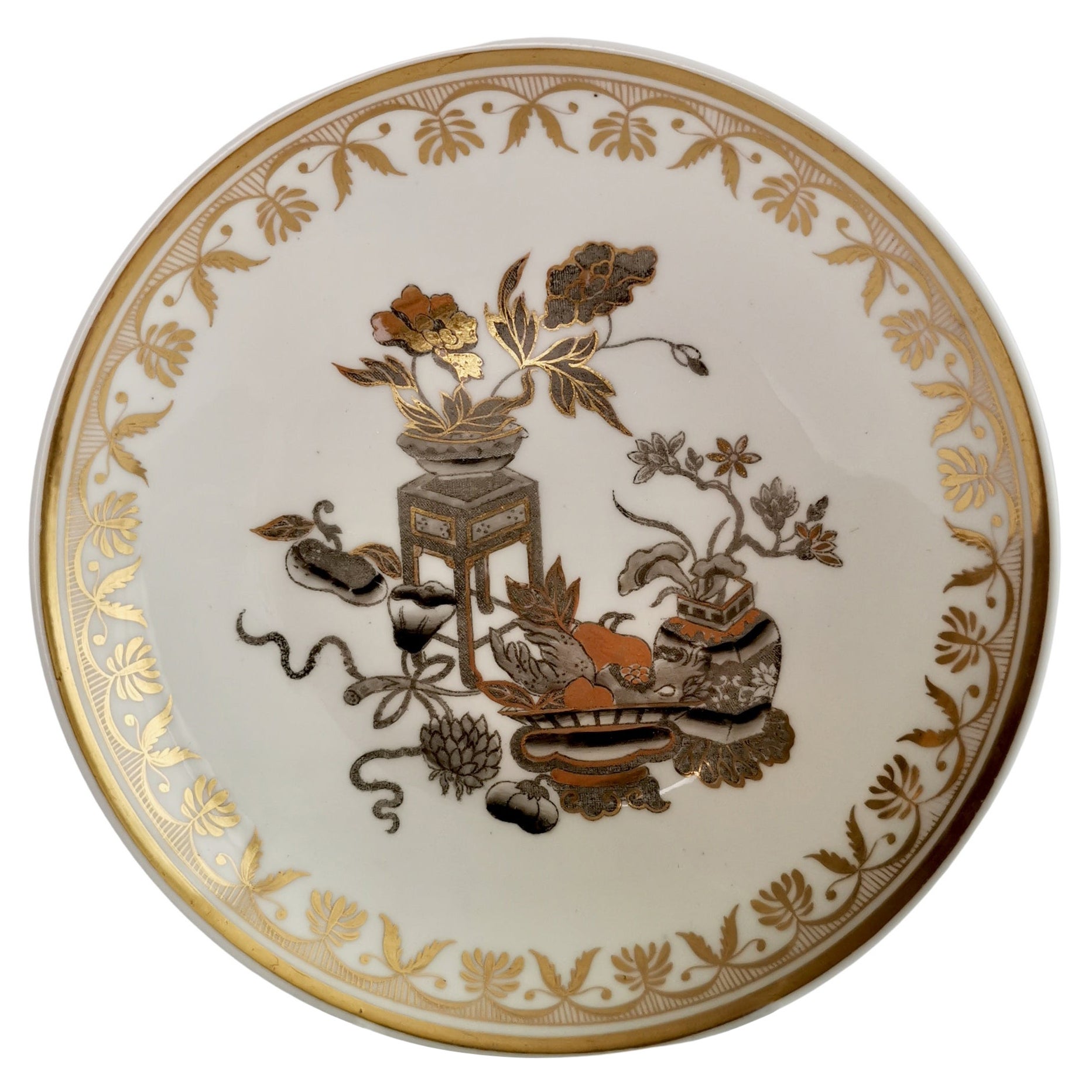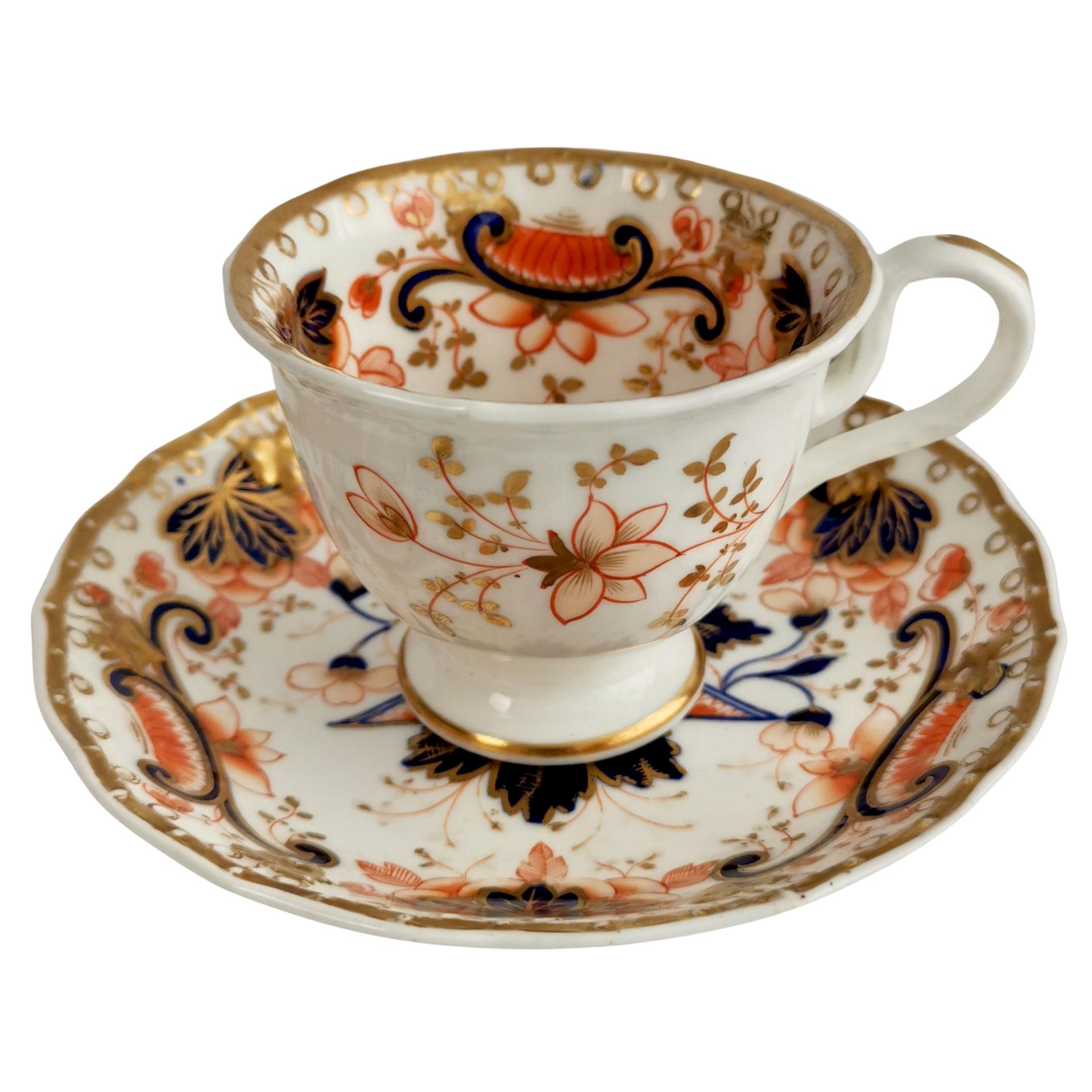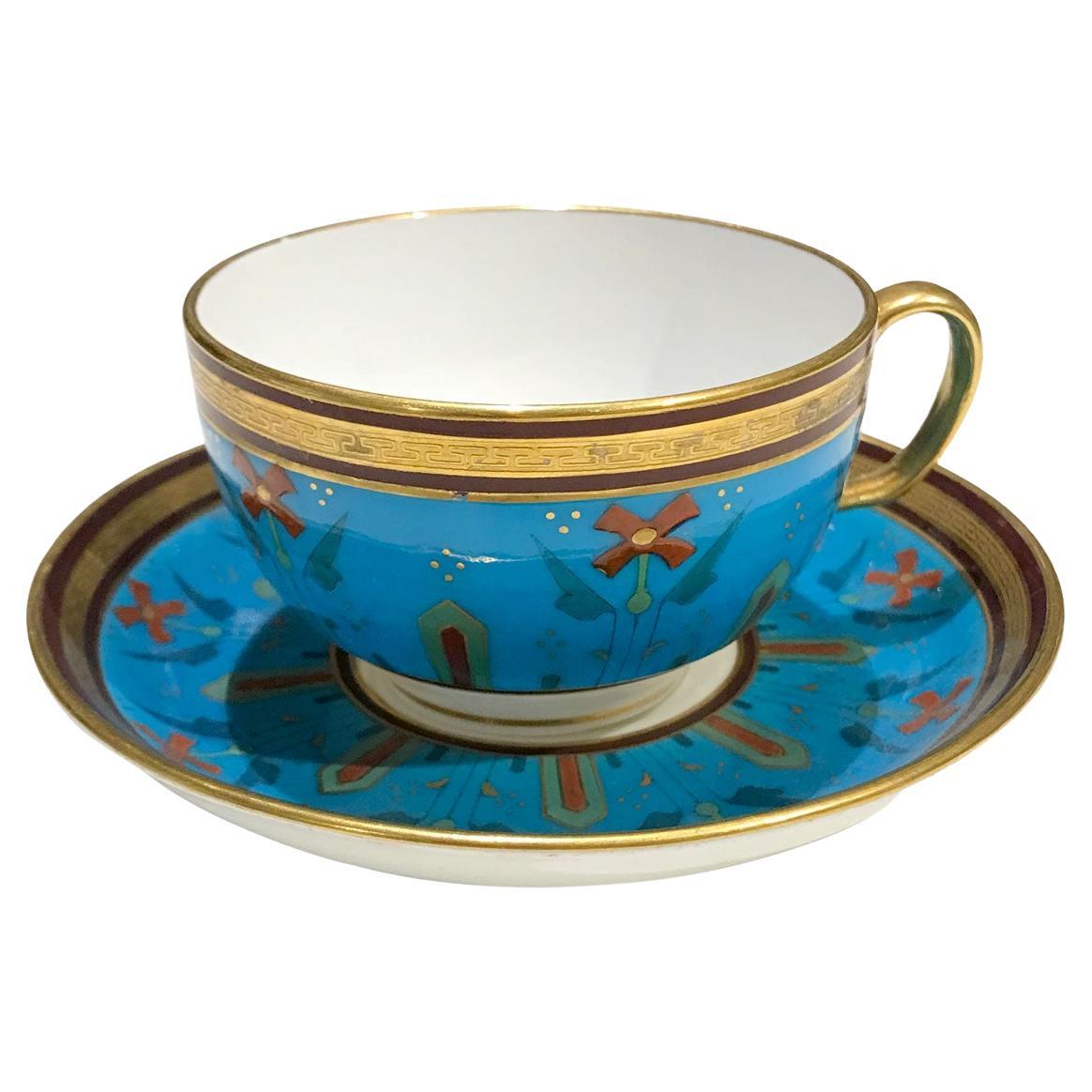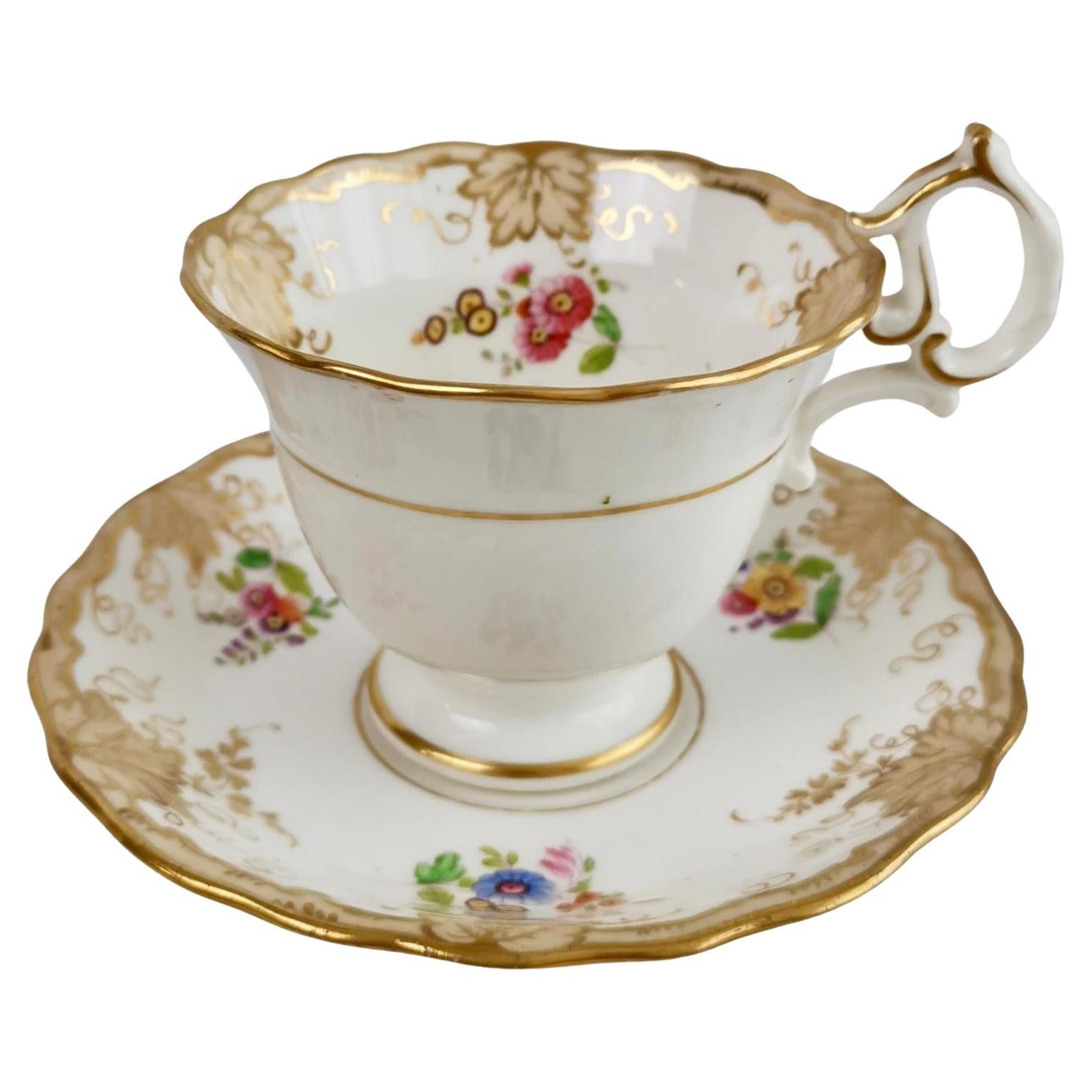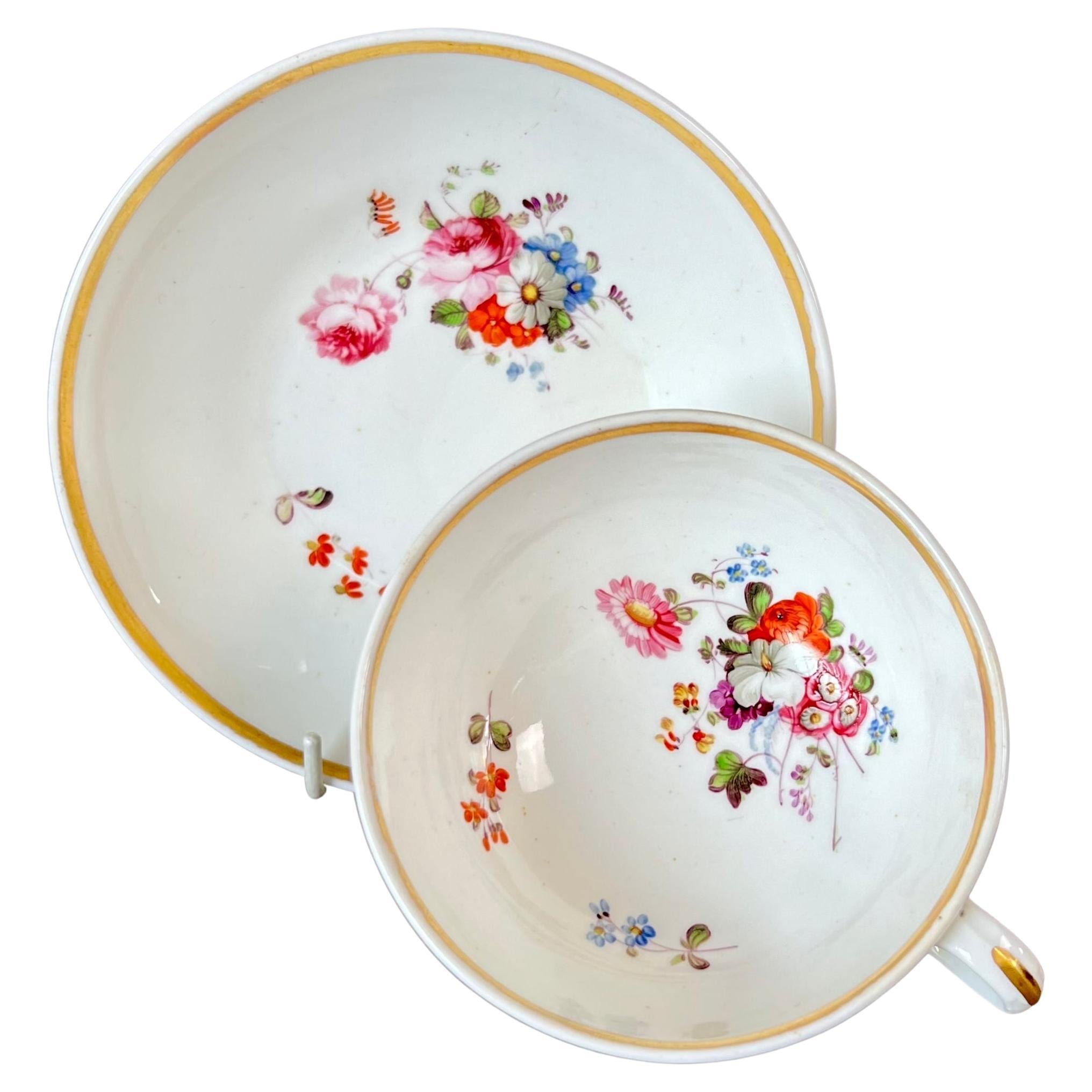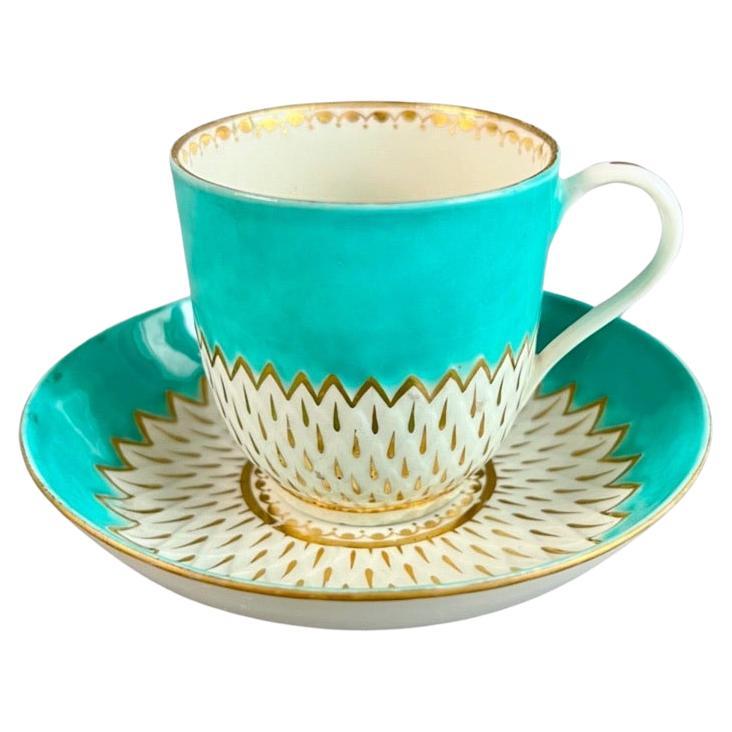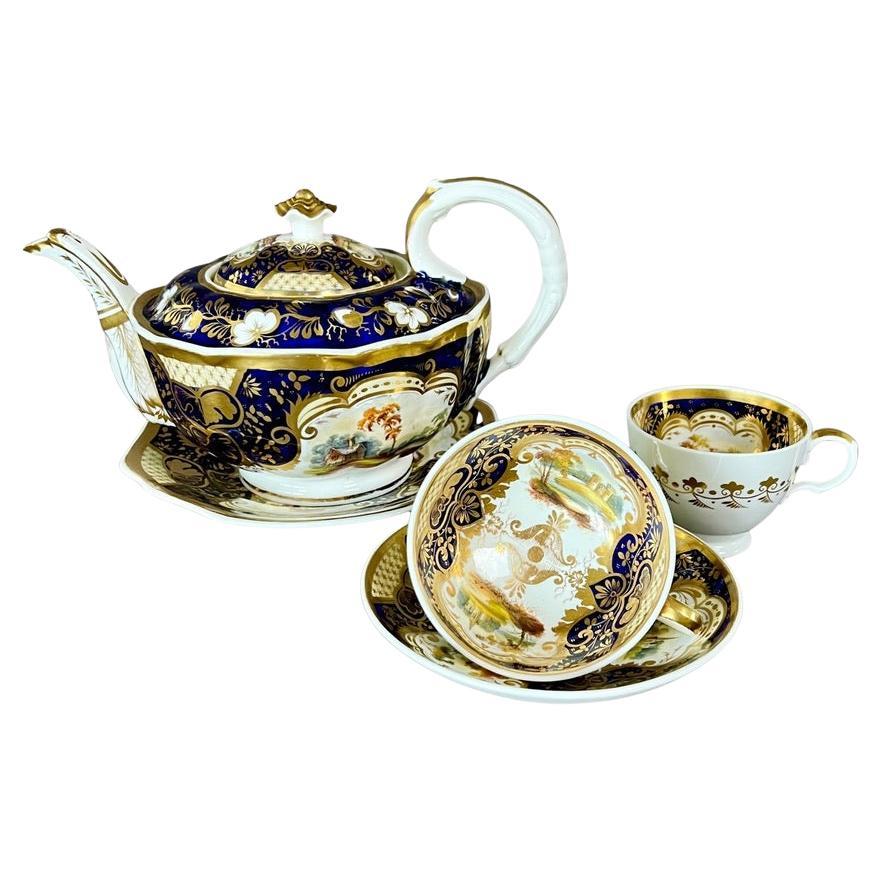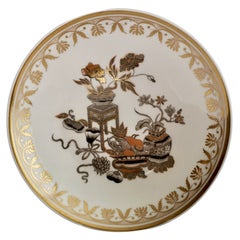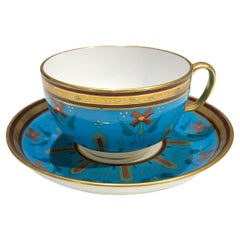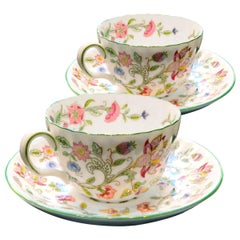
Minton Porcelain Orphaned Coffee Cup, Green with Flowers, ca 1825
View Similar Items
Minton Porcelain Orphaned Coffee Cup, Green with Flowers, ca 1825
About the Item
- Creator:Minton (Maker)
- Dimensions:Height: 2.5 in (6.35 cm)Diameter: 3.25 in (8.26 cm)
- Style:Regency (Of the Period)
- Materials and Techniques:
- Place of Origin:
- Period:
- Date of Manufacture:circa 1825
- Condition:Wear consistent with age and use. In perfect antique condition without any damage, repairs or crazing, and hardly any wear.
- Seller Location:London, GB
- Reference Number:Seller: A-MIN361stDibs: LU4805125595512
Minton
Pottery is one of the oldest decorative art forms, and Minton is one of its historical masters. For more than 250 years, the English company was a premier producer of porcelain and ceramic wares. Its factory was known for detailed and brightly colored Victorian tableware, including dinner plates and serving pieces.
Thomas Minton founded the Minton factory in 1793 in Stoke-upon-Trent, England. It initially made earthenware but introduced bone china in 1798. When Minton died in 1836, the company passed to his son, Herbert Minton. The younger Minton was a savvy businessman with an eye for design. He introduced glossy majolica earthenware to the factory’s repertoire and hired skilled artists and designers like Augustus Welby Northmore Pugin and Albert-Ernest Carrier-Belleuse, boosting the company’s reputation.
In 1851, Minton debuted its majolica at the Great Exhibition in London. It became a royal family favorite and was even used to tile the Royal Dairy at Windsor Home Park. Minton majolica was also displayed on the monumental Saint George and the dragon fountain at the 1862 London International Exhibition.
Colin Minton Campbell, a nephew of Herbert Minton, took over the family business in 1858. He led the company to the head of the 1870s English art pottery movement. In the 1890s, French porcelain artist Marc-Louis Solon helped modernize Minton with his Art Nouveau designs.
Minton ceased operating as an independent company when it merged with Royal Doulton Tableware Ltd. in 1968. It was the end of an era, but not the end of widespread appreciation for Minton ceramics.
In 1982, the ”English Majolica” exhibition at the Cooper Hewitt, Smithsonian Design Museum featured 75 Minton pieces. When the Metropolitan Museum of Art reopened its British Galleries in 2020, it included a display of three colorful Minton majolica bird sculptures. Minton pottery was also on display from September 2021 to January 2022, along with other English pottery, at the Bard Graduate Center’s ”Majolica Mania” exhibition.
On 1stDibs, find exquisite Minton serveware, decorative objects, wall decorations and more.
- Bloor Derby Porcelain Breakfast Cup with Plate, Gilt with Purple Flowers, Ca1825By Bloor Derby, DerbyLocated in London, GBThis is a very charming "breakfast" teacup and saucer with a plate, made by Derby / Bloor Derby between 1806 and 1825. It is likely that the set was potted between 1806 and 1825, then decorated and brought to the market around 1825. A breakfast cup is a large teacup...Category
Antique 1820s English Regency Porcelain
MaterialsPorcelain
$420 Sale Price / set20% OffFree Shipping - Chamberlains Worcester Orphaned Coffee Cup, Sepia Flower Sprays, Georgian ca1795By Chamberlains WorcesterLocated in London, GBThis is a beautiful orphaned coffee cup made by Chamberlains Worcester in about 1795. The cup has a spirally fluted or shanked shape and is decorated...Category
Antique 1790s English George III Tea Sets
MaterialsPorcelain
$200 Sale Price20% OffFree Shipping - Spode Orphaned Porcelain Saucer, Chinoiserie Gilt Potted Flowers, Regency ca1820By SpodeLocated in London, GBThis is a beautiful deep orphaned saucer made by Spode around 1820. The saucer is decorated with a gorgeous Chinoiserie pattern of a group of potted flowers in gilt and grey. The sau...Category
Antique 1820s English Regency Porcelain
MaterialsPorcelain
$200 Sale Price20% OffFree Shipping - Bow Porcelain Orphaned Coffee Cup, Famille Rose Peony, circa 1755By Bow PorcelainLocated in London, GBThis is a very charming orphaned coffee cup made by the Bow Porcelain factory in about 1755. The cup is decorated in a Chinese "famille rose" peony pattern. This cup would have been part of a large tea service, and the tiny size shows how expensive coffee was in the 18th Century. The Bow Porcelain Factory was one of the first potteries in Britain to make soft paste porcelain, and most probably the very first to use bone ash, which later got perfected by Josiah Spode to what is now the universally used "bone china". Bow was the main competitor of the Chelsea Porcelain Factory, but where Chelsea made very fine slipcast porcelain, Bow made a different soft paste porcelain that tended to be softer and could be pressed into moulds. Bow served a larger public generally at lower prices. The factory was only in operation between 1743 and 1774, after which the tradition got incorporated into some of the later famous potteries such as Worcester and Derby. The cup is unmarked, which is normal for Bow items of this era. Condition report the cup is in excellent condition without any damage or repairs. There are various glazing imperfections, which are quite normal for porcelain of this era. Antique British porcelain...Category
Antique 1750s English Rococo Tea Sets
MaterialsPorcelain
- Ridgway Porcelain Teacup and Saucer, Blue Flowers and Gilt, Regency, Ca 1825By Ridgway PorcelainLocated in London, GBThis is a beautiful teacup and saucer made around 1825 by Ridgway. It is decorated with the very popular pattern no. 2/1000: a cobalt blue ground with rich gilding and monochrome blu...Category
Antique 1820s English Regency Tea Sets
MaterialsPorcelain
$340 Sale Price / set20% OffFree Shipping - Minton Porcelain Teacup Trio, Bath Embossed White with Sepia Roses, Regency 1830By MintonLocated in London, GBThis is a rare and beautiful trio consisting of a teacup, coffee cup and saucer, made by Minton in circa 1830. Minton was one of the pioneers of English china production alongside...Category
Antique 1830s English Regency Tea Sets
MaterialsPorcelain
$345 / setFree Shipping
- Minton Tea cup attributed to Christopher Dresser, 1871By Minton, Christopher DresserLocated in Paris, FRWonderful aesthetic movement tea cup in hand-painted and hand-gilt porcelain by the English manufactory Minton. Blue background with stylized red flowers imitating the cloisonné technique, very common in the Japonisme ware. Attributed to Christopher Dresser, a famous designer that was working for Minton in 1867. He made very decorative designs, using very often this special shade of blue. A very small quantity of his work was signed, but the quality of some designs allows to make further -attribution to him, such as this tea cup. Signed with Minton hallmarks beneath, "Minton", number of the model G596 (China ware...Category
Antique 1870s English Aesthetic Movement Porcelain
MaterialsPorcelain
- 12 Teacups and Saucers Minton Bone China Porcelain Haddon HallBy MintonLocated in Paris, FRSet of 12 teacups and with their saucers in Minton Bone China Porcelain. Famous Minton Haddon Hall model designed by John William Wadsworth (1879–19...Category
Early 20th Century English Porcelain
MaterialsPorcelain
- 12 Teacups and Saucers Minton Bone China Porcelain Haddon HallBy MintonLocated in Paris, FRSet of 12 teacups and with their saucers in Minton Bone China Porcelain. Famous Minton Haddon Hall model designed by John William Wadsworth (1879-19...Category
Early 20th Century English Porcelain
MaterialsPorcelain
$494 Sale Price / set40% Off - Hand Painted Gilt Porcelain Tea, Coffee Cup with Desert PlateLocated in North Hollywood, CAFine gilt original porcelain coffee or tea cup with saucer and desert plate. Enjoy the start to your day with the classical sophistication of this fine p...Category
Late 20th Century French Bohemian Porcelain
MaterialsPorcelain
- Collection of Mario Buatta a Pair of Porcelain Cups Made in England, circa 1825By StaffordshireLocated in Katonah, NYProvenance: The Private Collection of Mario Buatta a pair of porcelain teacups made in England, circa 1825. This lovely pair of Staffordshire teacups is painted with a delicate flor...Category
Antique Early 19th Century English Country Tea Sets
MaterialsPorcelain
- Meissen Porcelain Pink Roses Coffee Service and Embossed Decorations '11 Cups'By Meissen PorcelainLocated in Prato, TuscanyWe kindly suggest you read the whole description, because with it we try to give you detailed technical and historical information to guarantee the authenticity of our objects. Rare Meissen porcelain coffee service in Biedermeier style; the set consists of a teapot, a sugar bowl, a milk jug, and 11 cups with plate; the various pieces are made of fine hand-painted hard white porcelain with the "Pink Roses" decoration enriched on all items with sumptuous unpainted relief decorations. Unlike the simple and quite common "Pink Roses", this model is very rare, prestigious, and sought after, therefore even more expensive; in fact, the objects with this relief decoration, much more particular and detailed than others, were fired three times, while those with only the "Pink Roses" decoration only twice. Moreover, the execution of this ornamental motif with delicate and graceful flowers was entrusted only to the most experienced and skilled painters, those in possession of the prestigious diploma obtained at the "School of Drawing of Meissen" established since 1764. The knobs of the teapot and sugar bowl represent two harmonious and graceful rosebuds, also handmade; the edges of the cups and saucers are scalloped and finished with pure gold as well as the other decorations of the teapot and sugar bowl. All pieces bear the original Meissen trademark (two crossed swords) and from the enclosed list it can be stated with certainty that our service was produced between 1934 and 1944; moreover, on the objects the model is handwritten (61/106), this wording makes the artifacts even more precious and appreciated as they preserve all the characteristics of the author's calligraphy. Meissen porcelain was created in the castle of Albrechtsburg, in Meissen, a small town in Saxony near Dresden, in 1710, at the behest of Augustus the Strong (1670-1733), Prince-Elector of Saxony and King of Poland, who wanted to start production after the studies and experiments of his alchemist Bottger. Bottger discovered the formula for porcelain, in fact at that time, only the Chinese and Japanese had the recipe to create this wonderful material; Meissen was, therefore, the first porcelain produced in Europe! Bottger never revealed his formula to anyone, only a certain stage was known to the workers; we do not know, even today, in what proportions the different components are mixed; this is the great secret that allowed the famous brand to be considered the best in the world, Meissen porcelain is given the nickname of "white gold"! Through the years, Meissen has perfected its hard-paste products with high-temperature firing during its glazing. Meissen's porcelain patterns have been copied by many other manufacturers around the world such as Royal Copenhagen, Dresden, Herend, and many others, but Meissen's porcelain glaze maintains its quality over time and is superior to all (plates will not scratch with prolonged use of cutlery!). This is why even old Meissen...Category
Mid-20th Century German Biedermeier Porcelain
MaterialsPorcelain
$4,837 Sale Price / set20% Off


